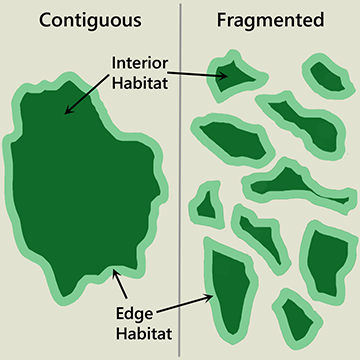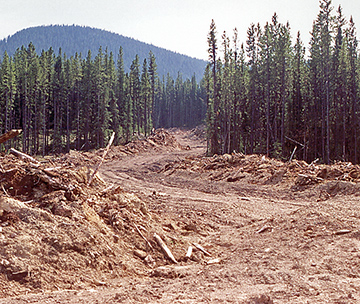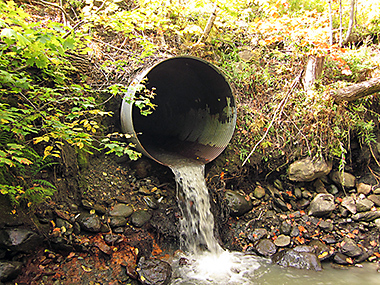General Causes of Decline
We will discuss the causes of species declines in terms of agents and disturbance processes. To be clear, these disturbance processes do not constitute threats in all circumstances or to all species. Species vulnerability is determined by a combination of exposure to disturbance and sensitivity to disturbance. In this chapter, we will focus on the exposure aspect (what and where), leaving the discussion of species-level factors to Chapter 6.
Two types of disturbances affect wild species: natural disturbances, such as fire and drought, and anthropogenic (i.e., human origin) disturbances, such as agricultural land conversion and the release of industrial pollutants. Because species have been exposed to natural disturbances over evolutionary time, they have developed adaptations for coping with them. Populations may undergo short-term declines but normally have the resilience needed to bounce back. In contrast, many species are unable to accommodate the extent, intensity, and unique features of modern anthropogenic disturbances. Thus, anthropogenic disturbances account for almost all the long-term population declines that have occurred over the past century. Natural disturbances can be an important risk factor for species once long-term declines from anthropogenic impacts have reduced their populations to a small size (see Chapter 6).
Habitat alteration is the most important type of anthropogenic disturbance, affecting over 80% of Canada’s species at risk (McCune et al. 2013). In some cases, habitat alteration takes the form of complete habitat loss, with nearly total replacement of natural ecosystem components with anthropogenic components (e.g., a wheat field). As habitat is lost from a region, the remaining habitat becomes increasingly fragmented, and this magnifies the impacts of the loss (Fahrig 2003).

For most species, fragmented patches of habitat cannot support the same populations that the equivalent amount of contiguous habitat can (Laurance 2008). In part, this is because habitat islands have more exposed edge than contiguous habitat (Fig. 5.2). For many species, edge constitutes poor quality habitat because it is subject to different micro-climates, different disturbance regimes, and different inter-specific interactions than interior habitat (Gehlhausen et al. 2000). Fragmentation also reduces connectivity and can interfere with territory establishment. All of these factors are species dependent because species perceive their environments at different scales and are sensitive to different factors.
The relative importance of habitat loss and habitat fragmentation continues to be debated. Some conservation scientists maintain that habitat loss is the overriding factor (Fahrig 2013), whereas others argue that fragmentation has an additive effect (Hanski 2015). As is often the case, both sides present valid arguments. There is good empirical evidence to suggest that habitat fragmentation has additive effects for some species in some circumstances (Ewers et al. 2007; Haddad et al. 2017). But it is also true that habitat loss and fragmentation are so closely correlated in most instances that they cannot be disentangled (Smith et al. 2009). Therefore, it is best to view these processes as two sides of the same coin. Moreover, we should recognize that the effects are nonlinear. The impacts of both processes are magnified when little habitat remains (Fahrig 2003).

Roads and other linear disturbances are a form of habitat loss that merits special mention (Fig. 5.3). In addition to habitat conversion, linear disturbances alter predator-prey dynamics, facilitate invasion by alien species, and cause soil erosion (Trombulak and Frissell 2000; Raiter et al. 2018). They also provide human access, which is problematic in its own right. For some species, like the marten, improved human access to remote areas exposes animals to increased harvest (Tigner et al. 2015). For others, like frogs, mortality from vehicles is most important (Eigenbrod et al. 2008). Some species, including grizzly bears and caribou, tend to avoid roads, which results in a functional loss of habitat (Dyer et al. 2002; Northrup et al. 2012). Once a species-specific threshold of linear disturbance density is reached, animal populations may exhibit reduced abundance and range contraction (Bayne et al. 2008; Tigner et al. 2015).

Aquatic systems are also threatened by road development. If an industrial access road happens to be built in the vicinity of a lake, access to the shoreline generally follows (Hunt and Lester 2009). With access, comes fishing and the depletion of preferred species. A study of lake trout in the boreal lakes in Ontario showed that abundance was reduced by half once access was developed (Kaufman et al. 2009). Roads also fragment aquatic habitat by blocking the natural flow of streams. Culverts are supposed to maintain this flow, but a significant portion fail over time due to poor design or installation (Fig. 5.4). An investigation in Alberta found that 50% of culverts were not functioning properly, suggesting that thousands of kilometres of streams were being fragmented (Park et al. 2008). Road construction is also a major source of erosion, leading to increased sediment in rivers (Kreutzweiser et al. 2013).
To the north of Canada’s agricultural region, human activities mostly result in reduced habitat quality rather than complete habitat loss. We will examine specific examples in the next section. Most entail ecosystem simplification, as reflected in species composition, ecological structures, and ecological functions. A decline in these attributes, relative to an unaltered system, is referred to as a loss of ecological integrity.
Other major contributors to species declines include (Venter et al. 2006):
- Overharvesting. This results from excessive hunting, fishing, trapping, and the removal of trees and plants for human use. In addition to declines in the abundance of the targeted species, there can be ripple effects throughout the biotic community from altered food web interactions.
- Toxic chemicals. These include industrial and residential pollutants as well as agricultural chemicals. These chemicals can affect the reproduction and survival of animals and plants, depending on their level of exposure and sensitivity. In the case of fertilizers, the issue is growth enhancement of certain species, resulting in ecological disruption.
- Alien species. The introduction of alien species can be inadvertent or deliberate. Alien species compete with and can displace native species, altering community structure and function.
- Climate change. Rising temperatures are changing the abundance and distribution of most species. The mechanisms and effects will be discussed in Chapter 9.
There are, of course, many other threats to species that are less extensive or are mainly a concern to species on the verge of extinction. Such threats include vegetation trampling from all-terrain vehicles, collisions and noise arising from ship traffic, bird mortality from windmill collisions, and the disturbance of nesting sites to name just a few.
The various forms of anthropogenic disturbance have all increased over time, coincident with technological advances and the growth of Canada’s human population. Thus, population growth and technology can be considered indirect drivers of species declines.

